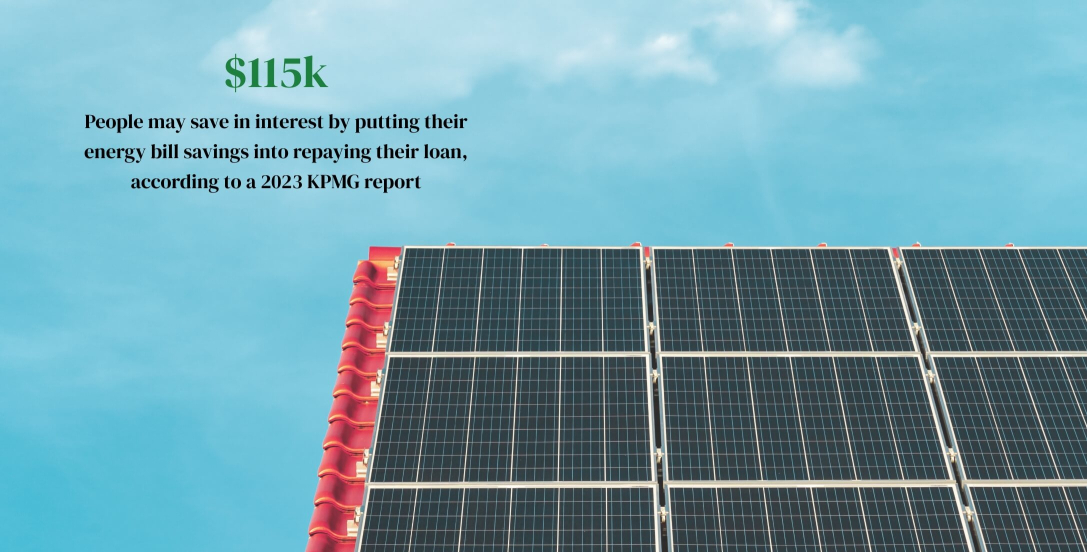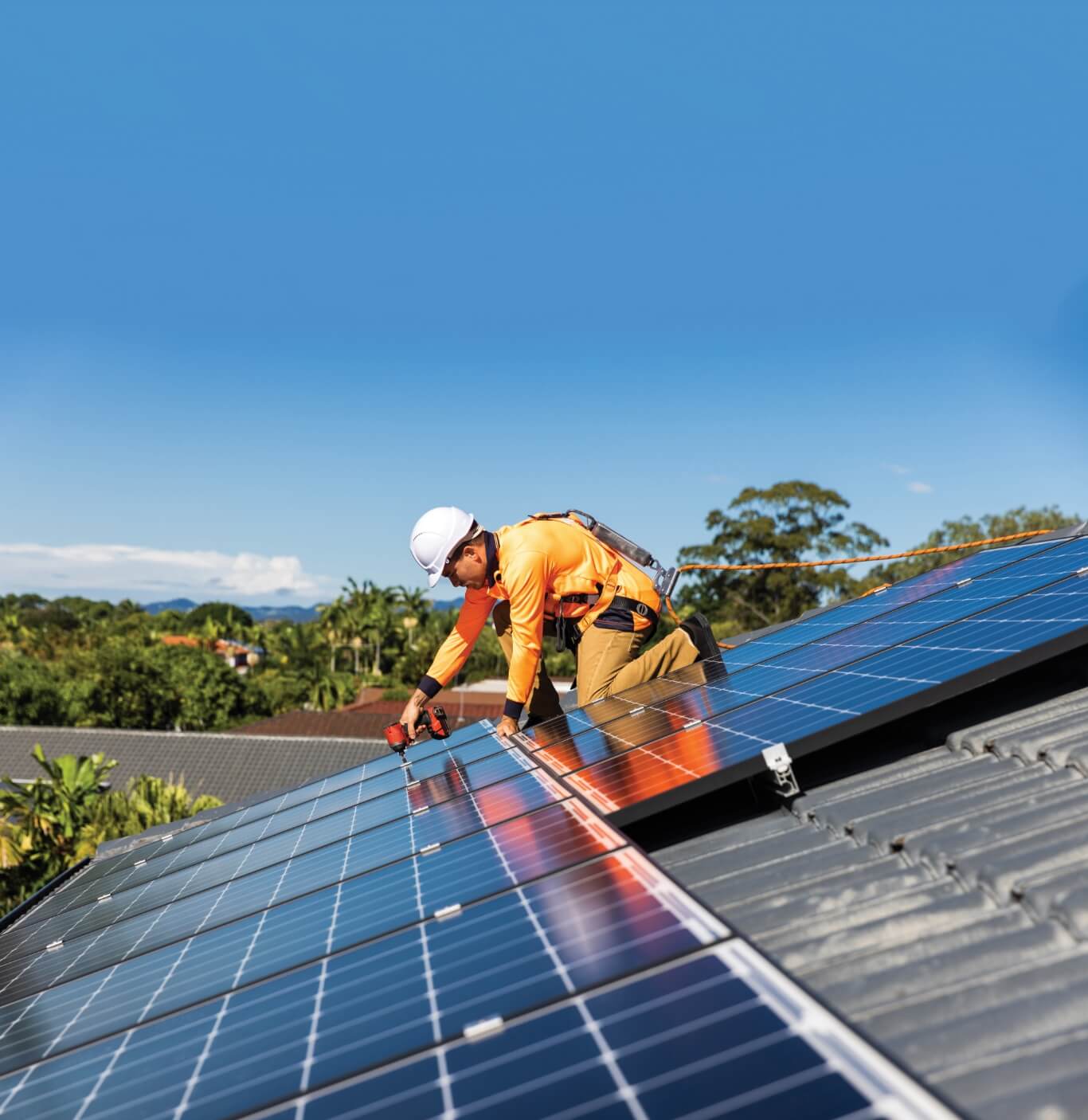From Western Sydney apartments that reach temperatures suitable for broiling in summer to inner Melbourne town houses that feel cold enough to preserve laboratory samples in winter, Australians traditionally haven’t quite nailed the art of building homes that feel comfortable year-round.
Consider the consistent rise in energy costs observed by the Australian Energy Regulator – average forward prices for electricity have already increased in all regions during the 2025 calendar year – and incentives to find cheaper ways for Australians to heat and cool their homes seem like a no-brainer.
Without even mentioning fears of an impending climate catastrophe, these hip-pocket pressures have seen a spike in demand for home add-ons such as solar panels and batteries that can help reduce energy bills.
And this demand, according to Zeb Drummond, COO of customer-owned Gateway Bank, provides an excellent opportunity for brokers to write products that incentivise environmentally friendly practices, such as ‘green’ mortgages.
“Green lending options can help reduce the financial impact of investing in these changes as they often offer reduced interest rates to support borrowers in making their homes energy efficient and less impactful on the environment,” Drummond says.
“For many households using equity in their home can be the simplest way to fund the installation.”

Green is good
Green mortgages provide incentives for borrowers to build, buy, or renovate their home with features or add-ons that help them adhere to energy standards. When borrowers do this, they are typically rewarded with discounts on the lender’s standard rate.
For example, green mortgages at the Commonwealth Bank of Australia (CBA) require borrowers to either meet the Green Building Council of Australia’s (GBCA) Green Star Home standard or achieve a 7-star rating from the Nationwide Home Energy Rating Scheme (NatHERS), outlined as part of the National Construction Code (NCC).
Borrowers have a range of options when it comes to the measures needed to meet these standards and, as Drummond says, it’s not just limited to solar panels.
“It also extends to increasing electrification of the home and reducing gas consumption, reducing heat transfer (losing internal heat in winter and preventing increasing heat in summer) through insulation and double-glazed windows. Other energy efficiency gains can be driven by installing LED lights and revisiting appliances,” Drummond says.
The primary focus of green mortgages therefore is to make these sorts of installations, which may represent a significant investment, more accessible.
“Lenders are meeting increasing consumer demand for green finance offerings. Impacts of climate change, cost of living challenges and a higher rate environment have led to borrowers looking to make their homes more energy efficient to reduce their energy costs and impacts on the environment,” Drummond says.
Point of interest
Another aspect adding to the appeal of green mortgages is the sense that the benefits are more than just a one-off sugar hit realised once the solar panel is secured to the roof.
The thinking embedded in the theory behind green mortgage products is that borrowers are unlocking savings on two fronts – savings on the amount of interest required to service a loan as well as savings from reduced energy bills.
And these savings unlock attractive scenarios. For instance, the 2023 Green Star Homes Standard study, conducted by accounting firm KPMG on behalf of the Green Building Council of Australia, estimates borrowers could save an average of $115,000 in interest on green mortgages by directing money saved from energy bills into loan repayments.
Another scenario that also has the opportunity to turbocharge the adoption of green lending products is the requirement that all new builds achieve a minimum 7-star NatHERS rating. This standard means new builds would qualify for a green mortgage – and the favourable terms that come with it – by default, provided they reach the mandated rating.
For Drummond, recent growth in the green lending market demonstrates the commitment of lenders such as Gateway to support customers to ‘go greener quicker’ without facing the ‘green tax’ of paying more for environmentally friendly options.
“We want to support our members to make their homes more energy efficient, helping them save money in utility bills while at the same time reducing their impact on the environment,” Drummond says.
People and planet
What’s good for borrowers is also good for banks.
In a speech delivered at the Reserve Bank of Australia’s (RBA) 2023 Risk Conference, acting RBA head of domestic markets Carl Schwartz explained the opportunity for mechanisms such as green mortgages to drive positive outcomes for the planet.
“Given the importance of bank lending in the Australian financial system, green loans are an attractive prospect for assisting in the green transition,” Schwartz said.
“In particular, given the size of household lending and residential emissions – residential buildings contribute more than 10 per cent of Australia’s carbon emissions – there is considerable potential to make a meaningful reduction to overall emissions.”
Another incentive for banks to offer green mortgage products is the sense that they represent a lower risk profile. Borrowers who have secured green mortgages are, theoretically at least, spending less on energy bills, freeing up capital to service their debt.
Drummond says Gateway has already observed heightened demand for these green loan products during the last 12 months.
“We’ve seen increased inquiry, application for our green lending products over the past 12 months, which has flowed through to strong growth in green lending balances,” he says.
“Pleasingly we’re seeing more and more interest in our Green Plus Home Loan which is for properties which have been certified as energy efficient.
“The other trend we’ve seen is the increasing range of green lending products in the market which is no doubt supporting the increased awareness of green lending options driving increased application flow.”
The broker opportunity
This last point from Drummond is important because often awareness can be one of the biggest barriers to the adoption of solutions that have attractive incentives.
Brokers can play an important role by putting these green mortgages in front of their clients. And there’s no better time than now. Drummond says demand in the sector is likely to increase in the coming years.
“We’d recommend reaching out to your lender panel and ask them what options they’re offering in the green lending space and how they’re recognising borrowers who have invested in their homes to make them more energy efficient and therefore reducing their impact on the environment,” Drummond says.
Homes that are cheaper to run and more comfortable to live in are good news to everyone. And while energy efficiency may have been a neglected element of the great Australian dream in the past, the growing adoption of products such as green mortgages points to a bright future.
“While green lending remains a small but growing niche in the market, Gateway sees this niche becoming a larger and more mainstream segment of the market into the future,” Drummond says.
“This will be driven by consumer demand and increased lender options.”



